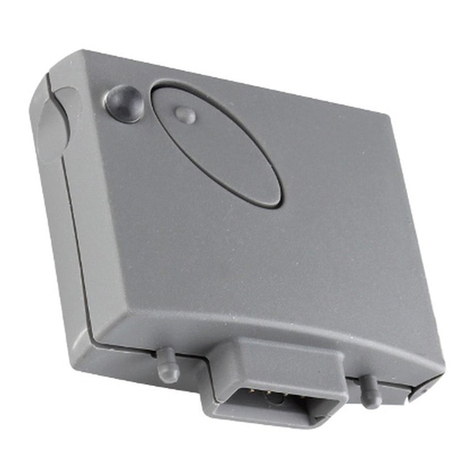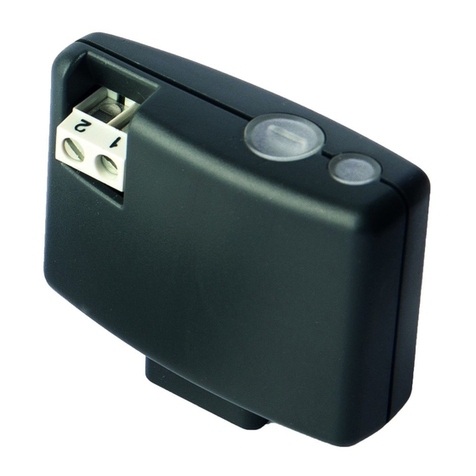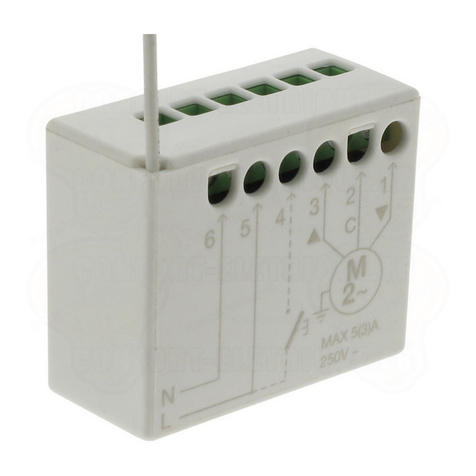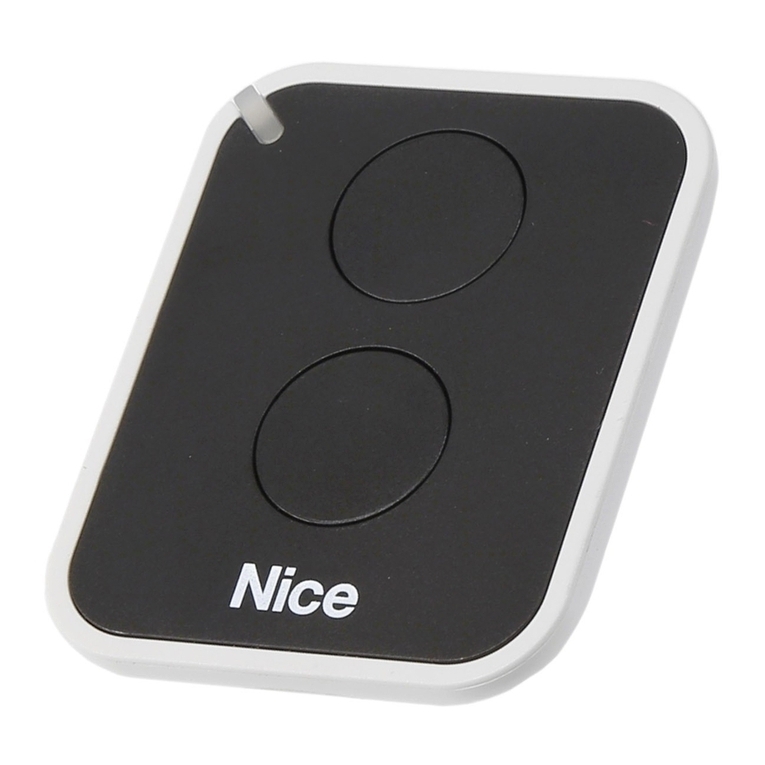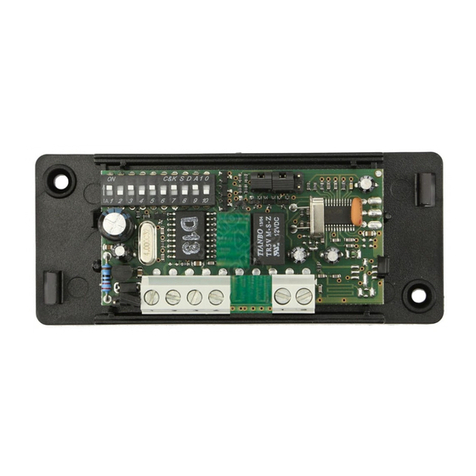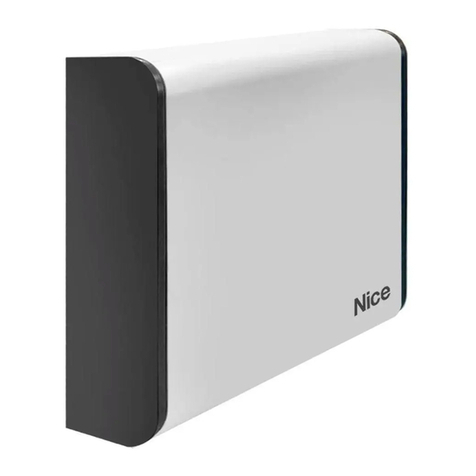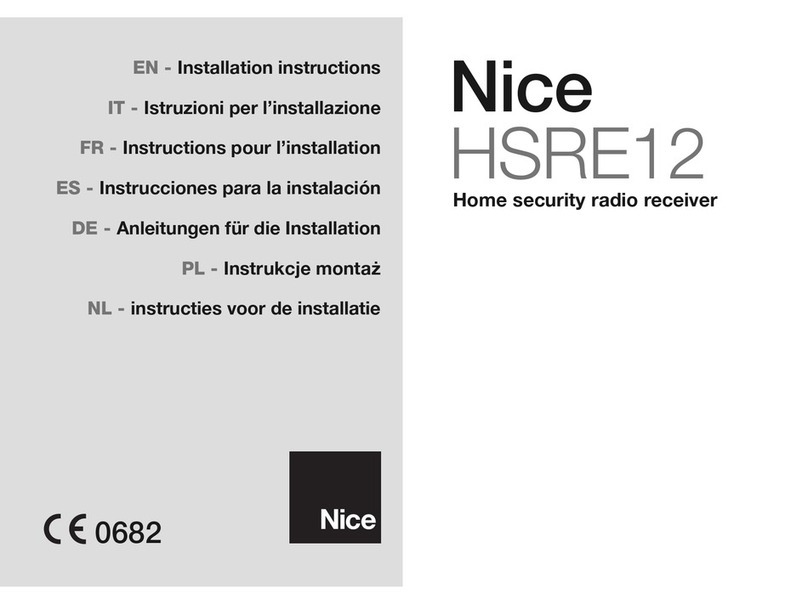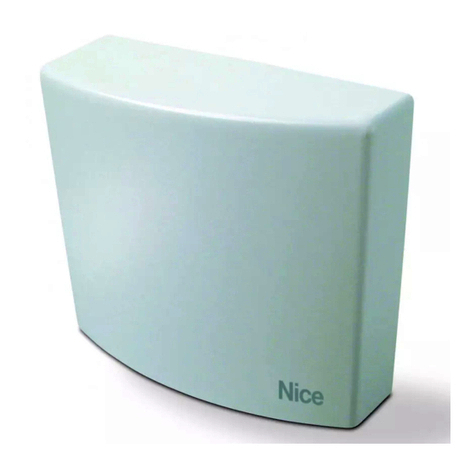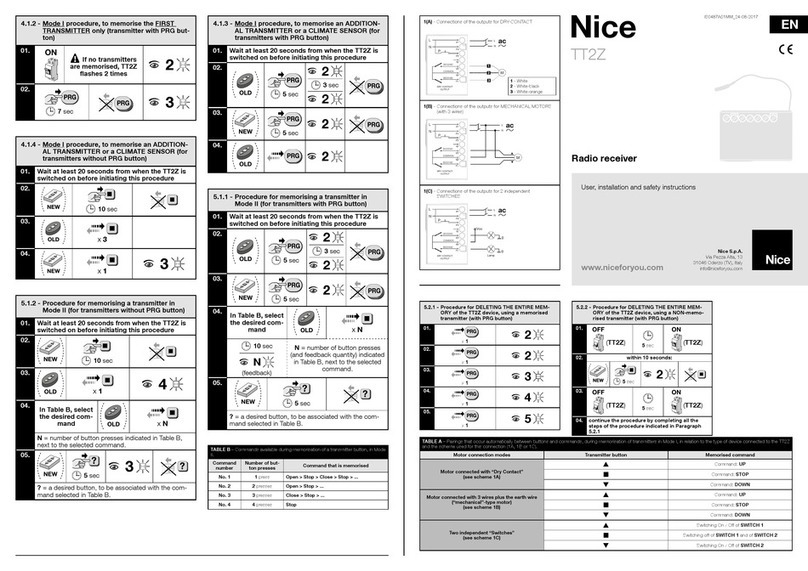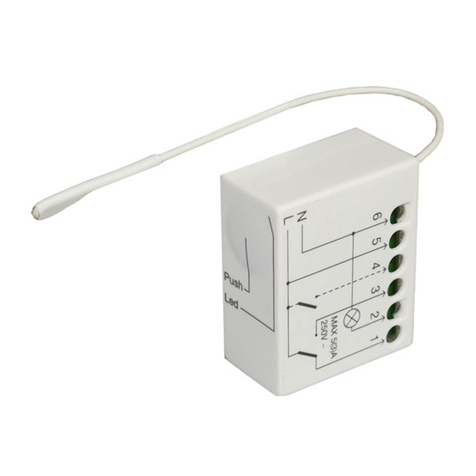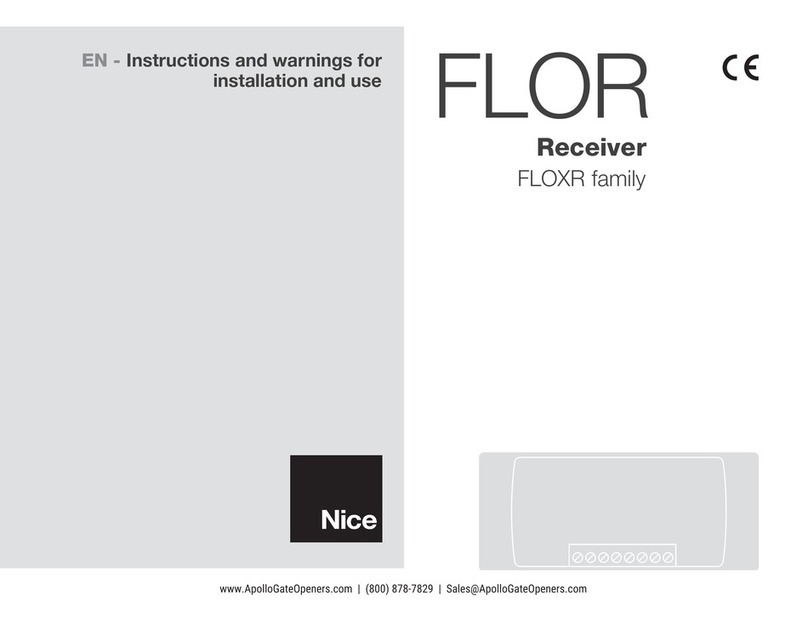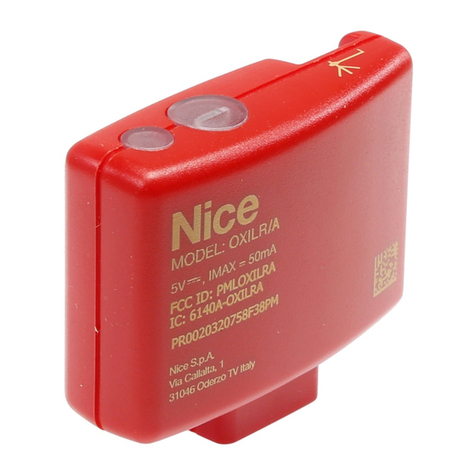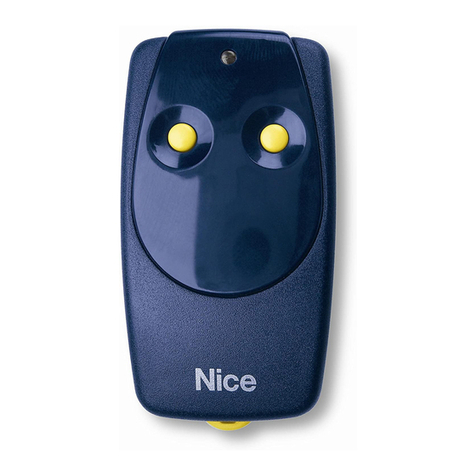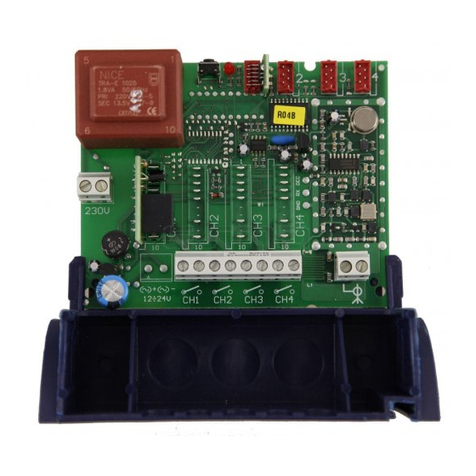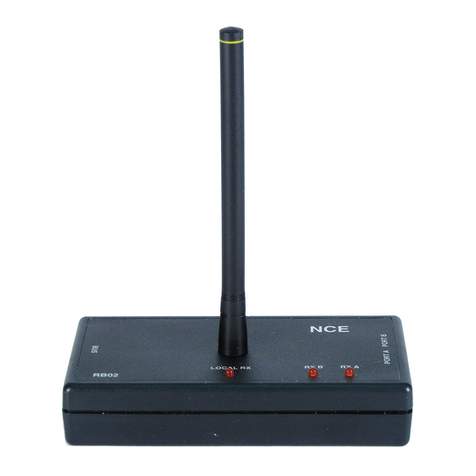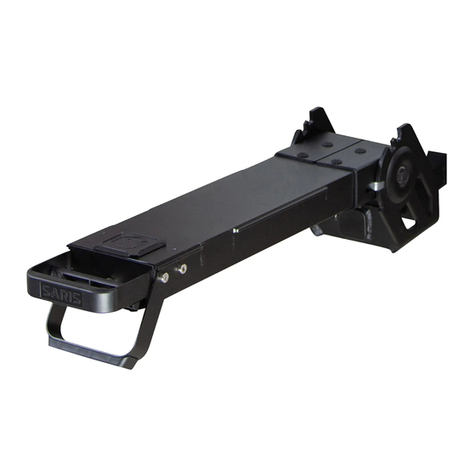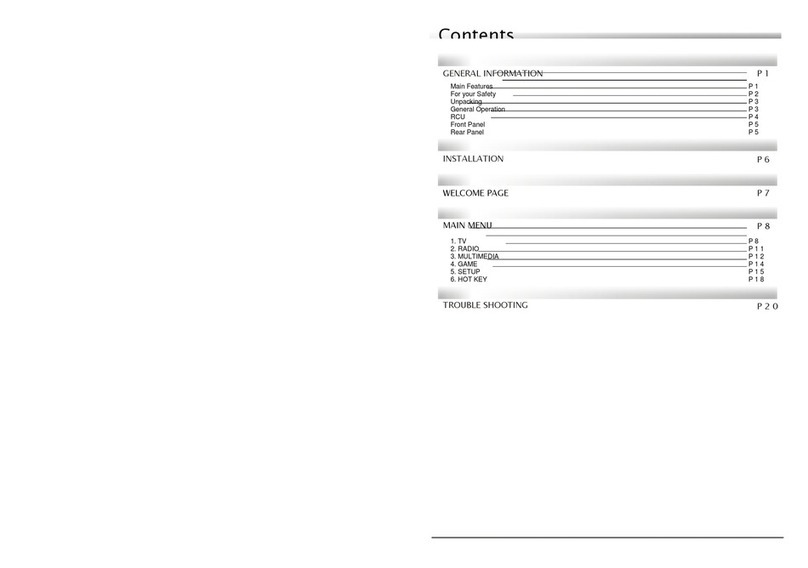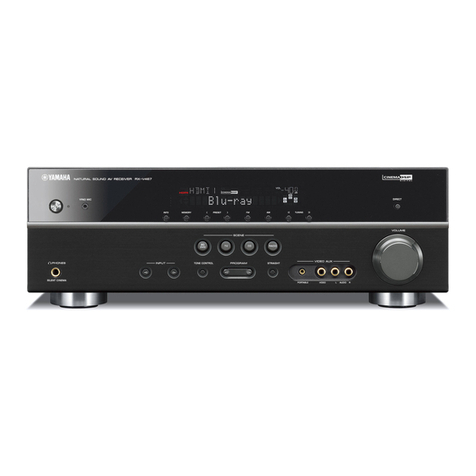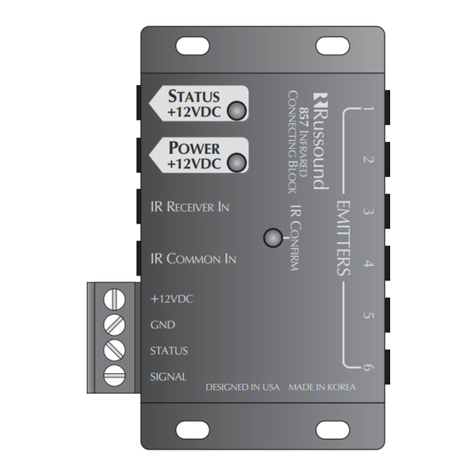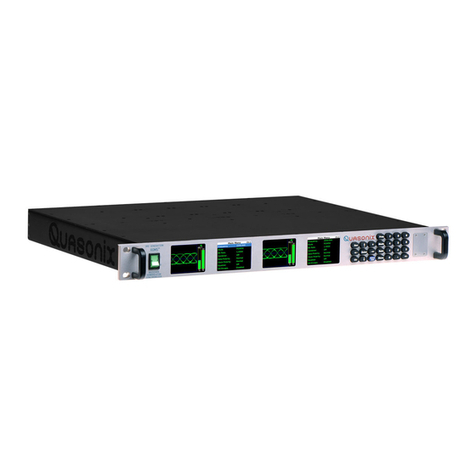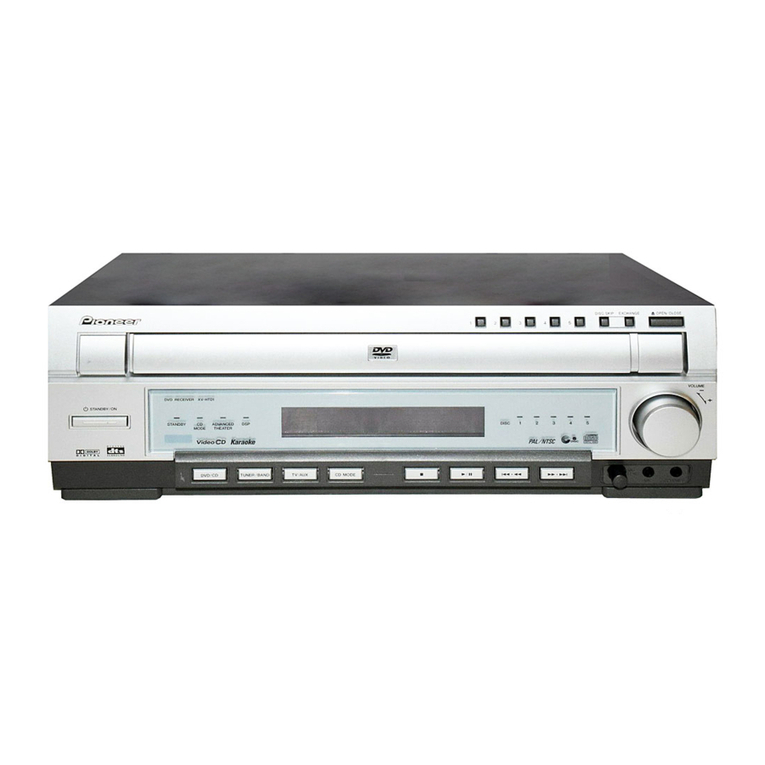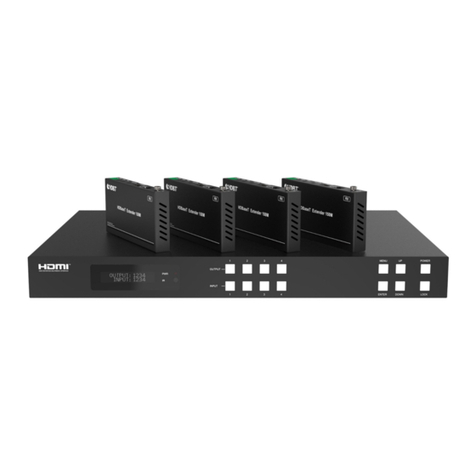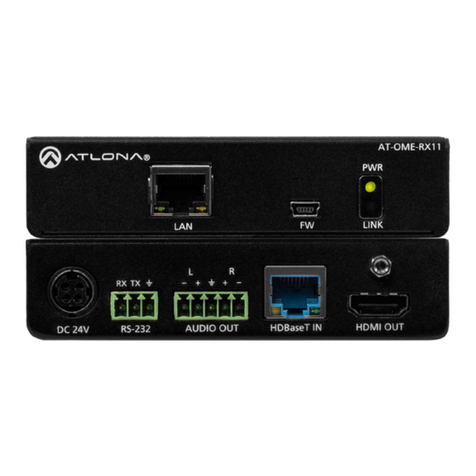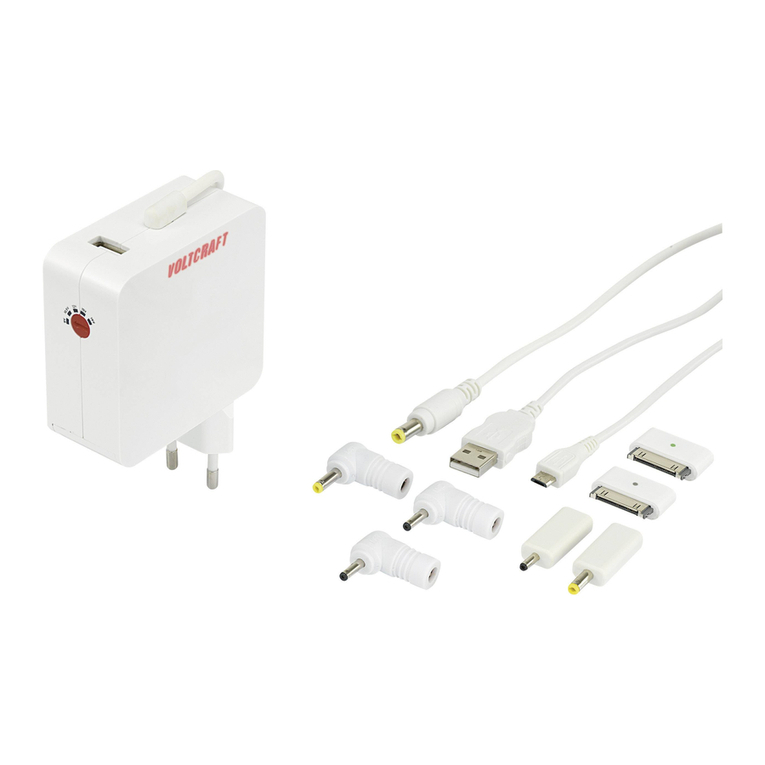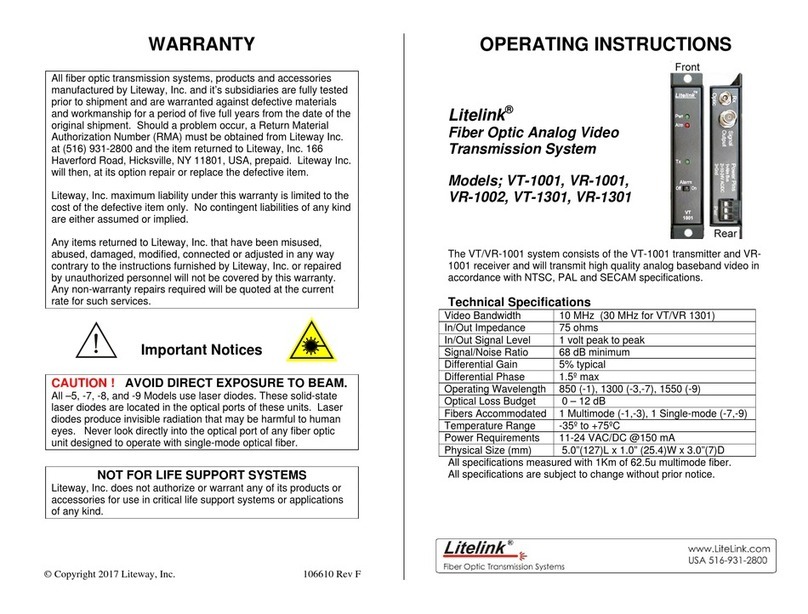
4
EN 5.1 – Memorisation in “MODE I”
Warning – This mode automatically assigns all com-
mands available on the receiver/control unit to the keys
on the transmitter; the installer may not change the
key/command assignments. In other words, during the
transmitter memorisation procedure, the system auto-
matically selects the commands available on the receiv-
er/control unit, and assigns them to the transmitter’s
keys. On conclusion of the procedure, each key has
been assigned to a command, according to the control
unit’s factory-set configuration.
01. Press and hold the key on the receiver until the green led
on the receiver illuminates. Then release the key.
02. (within 10 seconds) On the transmitter to be memorised,
press and hold any key until the led on the receiver emits
the first of 3 green flashes to confirm memorisation.
Note – After the three flashes, a 10-second interval is avail-
able to memorise another transmitter as required.
5.2 – Memorisation in “MODE II”
WARNINGS – This mode allows the user to manually
assign one of the available motor commands with one
of the keys of the transmitter; the installer can choose
which command and which key. In other words, during
the transmitter memorisation procedure, the installer
must assign the command (from among those available
on the control unit) to the transmitter’s key. On conclu-
sion of the procedure, to memorise another key with
another command, you must run the procedure again
from the start.
Caution! - Every automation has a list of commands
available for memorisation in Mode II; refer to the
control unit’s manual to determine which commands
are available.
01. In the control unit manual, look up the “Table of com-
mands”, select the command to assign to the transmit-
ter key and note the number corresponding to the com-
mand.
02. (on the receiver) Press the key the same number of times
as the previously noted number – the Led on the receiv-
er emits the same number of flashes repeated at regular
intervals.
03. (on the transmitter within 10 seconds) Press and hold the
selected key for memorisation until the led on the receiver
emits the first of 3 flashes (= memorisation confirmed).
Note – After the three flashes, a 10-second interval is avail-
able to memorise the same command on other keys on the
same transmitter or a new transmitter as required.
6– MEMORISING A TRANSMITTER USING
THE “ENABLE CODE” OF ANOTHER
TRANSMITTER [already memorised]
This procedure can only be used if two transmitters with
“O-Code/A” encoding are used.
Transmitters with this encoding have a secret code stored in
memory, called the ENABLE CODE.
Thanks to this code, operation of NEW transmitter can be
enabled by simply transferring the “enable code” of an OLD
transmitter (previously memorised on the receiver) onto its
memory (fig. 3). Note – For this procedure, refer to the trans-
mitter manual.
Subsequently, when the NEW transmitter is used, it will trans-
mit its own identity code to the receiver as well as the relative
